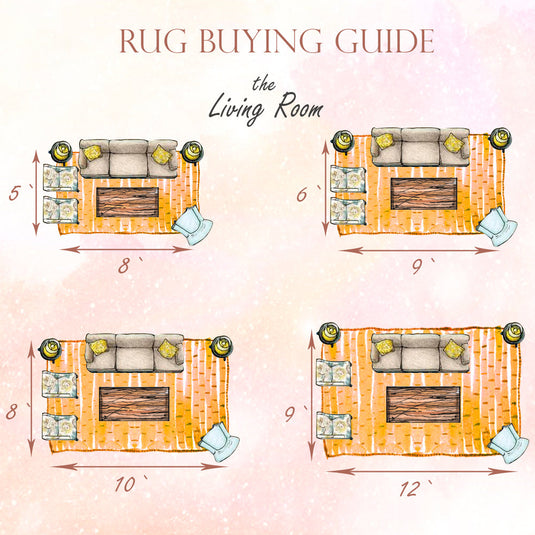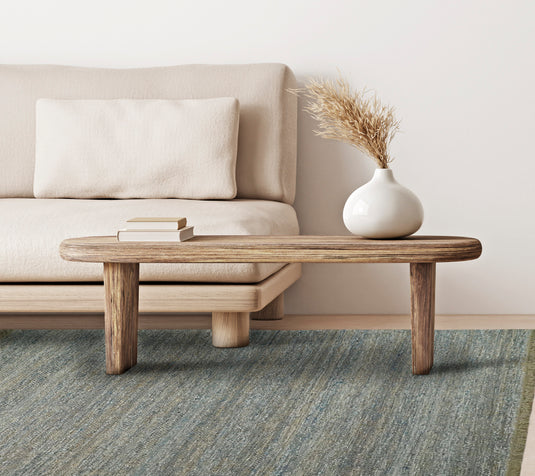Rugs play a vital role in transforming the look and feel of a room. They add warmth, texture, and style to any space, making them an essential element of interior design. However, choosing the right rug size can be a daunting task. Should it be large enough to encompass all the furniture or smaller, allowing the furniture legs to rest on it? In this comprehensive rug sizing guide, we will walk you through the factors to consider when selecting the perfect rug size for your space.

-
Determine the Purpose: Before diving into the world of rug sizes, it's important to understand the purpose of the rug in your room. Do you want the rug to be the focal point or simply complement the existing furniture? The purpose will help you determine the size and placement of the rug.

-
Measure the Room: Accurate measurements are crucial when choosing a rug size. Start by measuring the dimensions of the room, including the length, width, and any irregularities such as alcoves or built-in furniture. These measurements will serve as a foundation for selecting the appropriate rug dimensions.

-
Consider Furniture Placement: One popular approach to rug sizing is to place the rug under all the key furniture pieces in a room. This method works well in living rooms and bedrooms where you want a cohesive look. Measure the area covered by the furniture and choose a rug size that allows the furniture legs to rest comfortably on the rug.

-
Define the Space: In open-concept floor plans or rooms with distinct areas, rugs can be used to define separate spaces. In such cases, it's important to consider the size of each area and select rugs that fit accordingly. For example, in a dining area, choose a rug that accommodates the table and chairs, allowing enough space for people to move their chairs back without leaving the rug.

-
Allow for Borders: If you prefer a more minimalistic look or have limited space, you can opt for a smaller rug size that acts as an accent piece. In this case, make sure to leave a border of flooring exposed around the edges of the rug. This will create a visually pleasing contrast and prevent the room from feeling cramped.

-
Consider Traffic Flow: Consider how people will move around the room when determining the size of your rug. In high-traffic areas, it's best to choose a larger rug that provides a comfortable pathway and prevents tripping hazards. In hallways or entryways, opt for a runner rug that spans the length of the space.

-
Customize with Layering: Layering rugs can add depth and visual interest to a room. When layering rugs, start with a larger base rug that covers most of the floor space, and then add a smaller rug on top to create a focal point or highlight a specific area. Be mindful of the proportions and patterns to ensure a harmonious combination.

Choosing the right rug size is essential for creating a well-balanced and visually appealing space. By considering factors such as the purpose of the rug, furniture placement, room measurements, and traffic flow, you can find the perfect rug size for any room in your home. Remember to explore different options, experiment with layering, and trust your instincts to create a space that reflects your personal style and meets your functional needs. Happy rug shopping!





